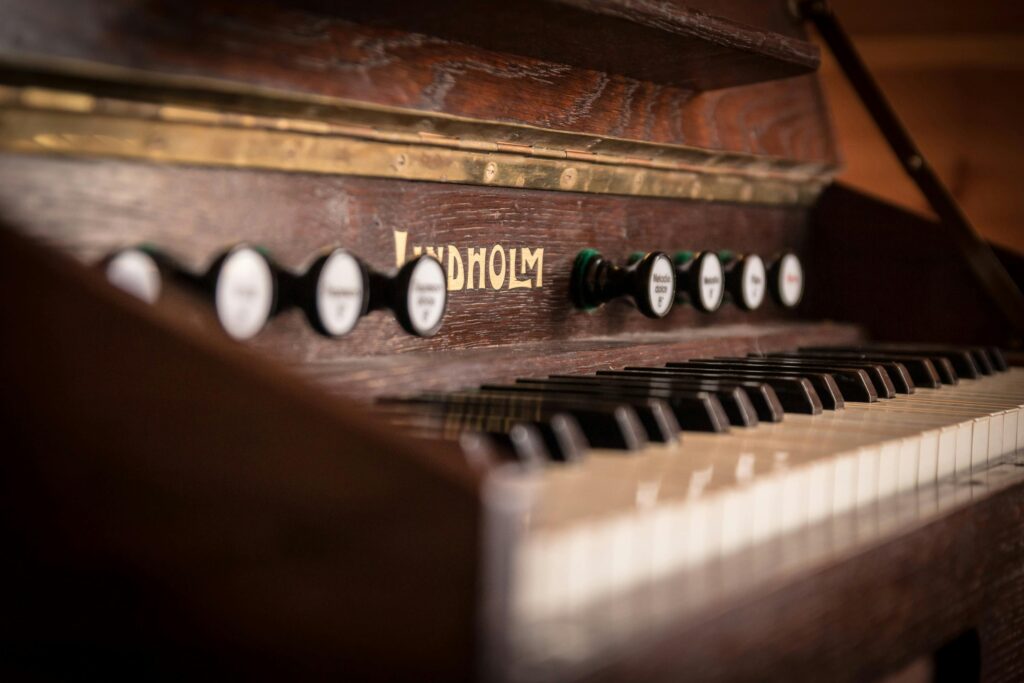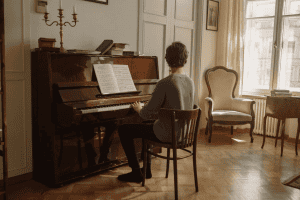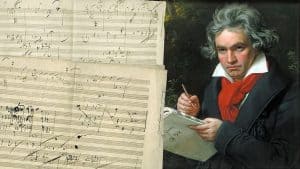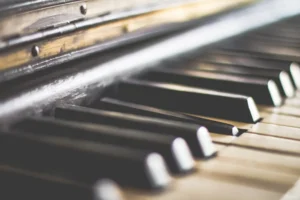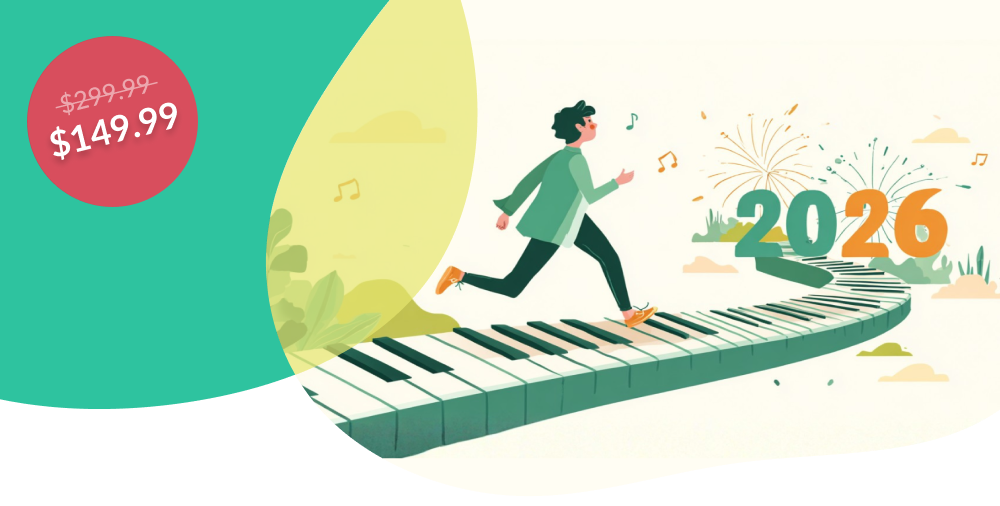The world of piano music is expansive and constantly evolving. Unlike the traditional classical repertoire that has long been a staple, contemporary piano introduces a fresh, dynamic, and innovative way of engaging with the instrument.
Spanning styles from minimalism to avant-garde, this genre has gained significant popularity, attracting both beginners and experienced musicians alike. Its rise mirrors a broader movement in modern music, where pushing boundaries and embracing creativity have become central themes.
For today’s musicians, exploring contemporary piano is invaluable. It not only introduces new techniques and styles but also deepens one’s connection to the ever-changing musical landscape.
- Fall in love with the music - Learn your favorite songs, at a level suitable for you.
- Enjoy interactive piano lessons - Explore courses covering music theory, technique chords & more.
- Get real-time feedback - Skoove's feedback tells you what went well and what needs practice.

Understanding contemporary piano
Contemporary piano refers to piano music composed from the late 20th century to the present day. It’s a genre characterized by its diversity, incorporating elements from various musical traditions, including classical, jazz, pop, and electronic music. Unlike classical piano, which often adheres to strict forms and structures, contemporary piano embraces freedom, innovation, and experimentation.
This genre is not confined to any one style or technique but rather encompasses a wide range of approaches to the instrument. From the minimalist compositions of Philip Glass to the emotionally resonant pieces by Ludovico Einaudi, contemporary piano is as varied as the composers who create it.
Evolution from classical roots
Contemporary piano music evolved from classical piano traditions but with a twist. While classical and romantic composers like Beethoven, Chopin, and Liszt laid the foundation with their intricate compositions, contemporary composers have taken those foundations and built upon them with modern influences.
Additionally, the late 19th and early 20th centuries saw the rise of movements like Impressionism and Jazz, which began to incorporate more complex harmonies, rhythms, and improvisation into piano music. These influences set the stage for contemporary piano, which fully embraces these elements while also integrating new ones, such as electronic music and extended techniques.
Key characteristics
Let’s explore some of the key characteristics of contemporary piano music. While this is not an exhaustive list, these characteristics are found in most contemporary piano music.
- Rhythmic innovation
Contemporary piano music often features complex rhythms and syncopations that challenge traditional notions of meter and time. This rhythmic complexity adds a layer of depth and excitement to the music.
- Use of modern scales and harmony
Contemporary composers frequently explore non-traditional scales, such as whole-tone and pentatonic scales, as well as more dissonant harmonies. These elements give contemporary piano music its unique and often unpredictable sound.
- Experimentation with sound
Contemporary piano is known for its experimentation with sound. Composers may incorporate electronic elements, unconventional playing techniques, or even preparations (where objects are placed on the piano strings) to create new and interesting textures.
Genres under contemporary piano
Contemporary piano is a bit of a vague term in some regards. Contemporary piano does not exactly point to one specific genre, as the terms “classical piano” or “Impressionistic piano” might. Let’s take a look at some recent stylistic and genre innovations that generally fall under the banner of contemporary piano.
| Minimalism | A style characterized by repetitive patterns and gradual changes, often creating a hypnotic effect. Composers like Philip Glass are pioneers of this genre. |
| New age | A genre that blends classical elements with ambient, meditative sounds, often used for relaxation or contemplation. Ludovico Einaudi is a well-known figure in this genre. |
| Avant-Garde | Experimental and unconventional, avant-garde piano music pushes the boundaries of traditional composition, incorporating dissonance, atonality, and unconventional playing techniques. |
| Jazz and fusion | Contemporary piano music often borrows from jazz, incorporating improvisation, swing rhythms, and complex chord progressions. This fusion creates a rich, dynamic sound that appeals to a wide audience. |
Notable contemporary piano composers
Contemporary piano has been shaped by a number of influential composers who have each brought their unique voice to the genre. These composers have expanded the possibilities of what piano music can be, influencing countless musicians and listeners around the world. Let’s briefly explore four of the top contemporary piano composers.
Philip Glass: A giant in the minimalist movement, Philip Glass’s compositions are characterized by repetitive structures and subtle variations. His works, such as “Metamorphosis” and “Glassworks,” have become iconic in contemporary piano music, offering a meditative and almost hypnotic listening experience.
Ludovico Einaudi: Perhaps one of the most well-known contemporary composers, Ludovico Einaudi’s music blends classical structures with popular music sensibilities. His pieces, like “Nuvole Bianche” and “Una Mattina,” are emotionally evocative and have a broad appeal, making them popular in films and television.
Yann Tiersen: Best known for his soundtrack to the film Amélie, Yann Tiersen’s music is a fusion of classical and contemporary styles. His compositions often feature a blend of piano with other instruments, creating a rich, multi-layered sound.
Nils Frahm: A contemporary composer and performer, Nils Frahm is known for combining classical piano with electronic music. His innovative use of synthesizers and unconventional playing techniques, as heard in albums like Spaces and Felt, has earned him a devoted following.
Popular contemporary piano pieces
Contemporary piano music is rich with compositions that showcase the genre’s unique characteristics. Here are a few notable pieces that exemplify the diversity and creativity of contemporary piano:
- “Metamorphosis One” by Philip Glass: This piece is a quintessential example of Glass’s minimalist style. It features repetitive arpeggios with subtle shifts in harmony, creating a meditative and almost trance-like effect.
- “Nuvole Bianche” by Ludovico Einaudi: A hauntingly beautiful piece, “Nuvole Bianche” is one of Einaudi’s most famous compositions. It blends simple, emotive melodies with rich harmonies, making it a favorite among both listeners and performers.
- “Comptine d’un autre été: L’après-midi” by Yann Tiersen: Featured in the film Amélie, this piece is both playful and melancholic. Its repetitive motifs and simple yet expressive melody have made it an enduring favorite in contemporary piano repertoire.
- “Says” by Nils Frahm: This piece is a prime example of Frahm’s innovative approach to piano music. It combines acoustic piano with electronic effects, creating a powerful and dynamic soundscape that evolves over the course of the piece.
Breakdown of the unique elements in these pieces
So, what is unique in all these pieces? Here are a few elements to note:
- Rhythmic patterns: In “Metamorphosis One,” the repetitive arpeggios create a steady rhythmic pulse, while the shifts in harmony add subtle tension and release. This use of rhythm in music is a hallmark of minimalism.
- Melodic simplicity: “Nuvole Bianche” is characterized by its simple, yet deeply emotional melody. Einaudi’s use of repetition and variation in the melody creates a sense of longing and introspection.
- Expressive dynamics: In “Comptine d’un autre été: L’après-midi,” Tiersen uses dynamics to great effect, with the piece moving between soft, introspective passages and more forceful, expressive moments.
- Electronic integration: “Says” by Nils Frahm exemplifies the integration of electronic elements in contemporary piano music. The piece builds gradually, with layers of electronic effects adding depth and complexity to the acoustic piano sound.
These pieces highlight the diverse range of styles and techniques found in contemporary piano music, each offering something unique and compelling to both the performer and the listener.
How to play contemporary piano
To begin playing contemporary piano, there are several fundamental skills that you’ll need to develop. Let’s explore a few of these skills, all of which are applicable to most every other style of piano playing you might be interested in.
- Strong rhythmic sense
Given the complexity of rhythms in contemporary piano, developing a strong sense of timing and rhythm is essential. Practice with a metronome and explore different time signatures to build your rhythmic foundation.
- Ear training
Contemporary piano often involves improvisation and non-traditional harmonies, so ear training is crucial. Practice identifying intervals, chords, and progressions by ear to enhance your improvisational skills.
- Technique and dexterity
While contemporary piano may not always require the technical precision of classical music, having a solid technical foundation will allow you to tackle more complex pieces. Regular practice of scales, arpeggios, and finger exercises will build the necessary dexterity.
- Creativity and open-mindedness
Contemporary piano is all about innovation and experimentation. Be open to trying new techniques, exploring different genres, and creating your own interpretations of pieces.
Here are a few practical exercises to help you get started with contemporary piano:
Rhythmic variations: Take a simple melody and experiment with different rhythmic variations. Try playing it in different time signatures, adding syncopation, or altering the rhythm to create a new feel.
Improvisation practice: Start with a basic chord progression and practice improvising melodies over it. Focus on exploring different scales and modes to create unique sounds.
Electronic integration: If you have access to a keyboard with electronic capabilities, experiment with layering different sounds and effects. Practice playing along with a backing track or creating your own electronic accompaniments.
Extended techniques: Explore extended piano techniques, such as plucking the strings inside the piano, using the piano pedals to create a wash of sound, or preparing the piano with objects to alter its timbre. These techniques can add an exciting new dimension to your playing.
Get inspiration from some of Ludovico Einaudi’s top pieces in the video below, as you master playing contemporary piano.
Tips for success
Here are a few tips that can build you up for success when playing contemporary piano:
Consistency is key Regular practice is essential for mastering contemporary piano. Set aside time each day to practice, even if it’s just for a few minutes. Listen actively Immerse yourself in contemporary piano music by listening to a wide range of composers and styles. Pay attention to the nuances in rhythm, harmony, and texture. Experiment and innovate Don’t be afraid to experiment with new sounds and techniques. Contemporary piano is all about pushing boundaries, so explore different ways to express yourself through the instrument. Join a community Engaging with other contemporary piano enthusiasts can provide inspiration, feedback, and support. Consider joining online forums, attending workshops, or collaborating with other musicians. Use technology Take advantage of technology to enhance your learning. Apps like Skoove, digital synthesizers, and recording software can open up new possibilities for your playing.
Check out some contemporary piano today
Contemporary piano is a fresh and exciting genre that opens up endless possibilities for creativity and expression. Whether you’re into the rhythmic twists of minimalism, the moody vibes of new-age, or the bold, experimental sounds of the avant-garde, contemporary piano has something for everyone.
By getting familiar with the key elements of the genre, exploring influential composers, and sharpening your skills, you’ll be ready to dive into this world. Most importantly, enjoy the ride and let your creativity run wild.
Ready to get started? Check out Skoove’s contemporary piano lessons and discover what makes this genre so fun to explore!
Author of this blog post:
Susana Pérez Posada

With over seven years of piano education and a deep passion for music therapy, Susana brings a unique blend of expertise to Skoove. A graduate in Music Therapy from SRH Hochschule Heidelberg and an experienced classical pianist from Universidad EAFIT, she infuses her teaching with a holistic approach that transcends traditional piano lessons. Susana’s writings for Skoove combine her rich musical knowledge with engaging storytelling, enriching the learning experience for pianists of all levels. Away from the piano, she loves exploring new places and immersing herself in a good book, believing these diverse experiences enhance her creative teaching style.
Edited and fact-checked by Eddie Bond, multi-instrumentalist performer, composer, and music instructor
Published by Lydia Ogn from the Skoove team







